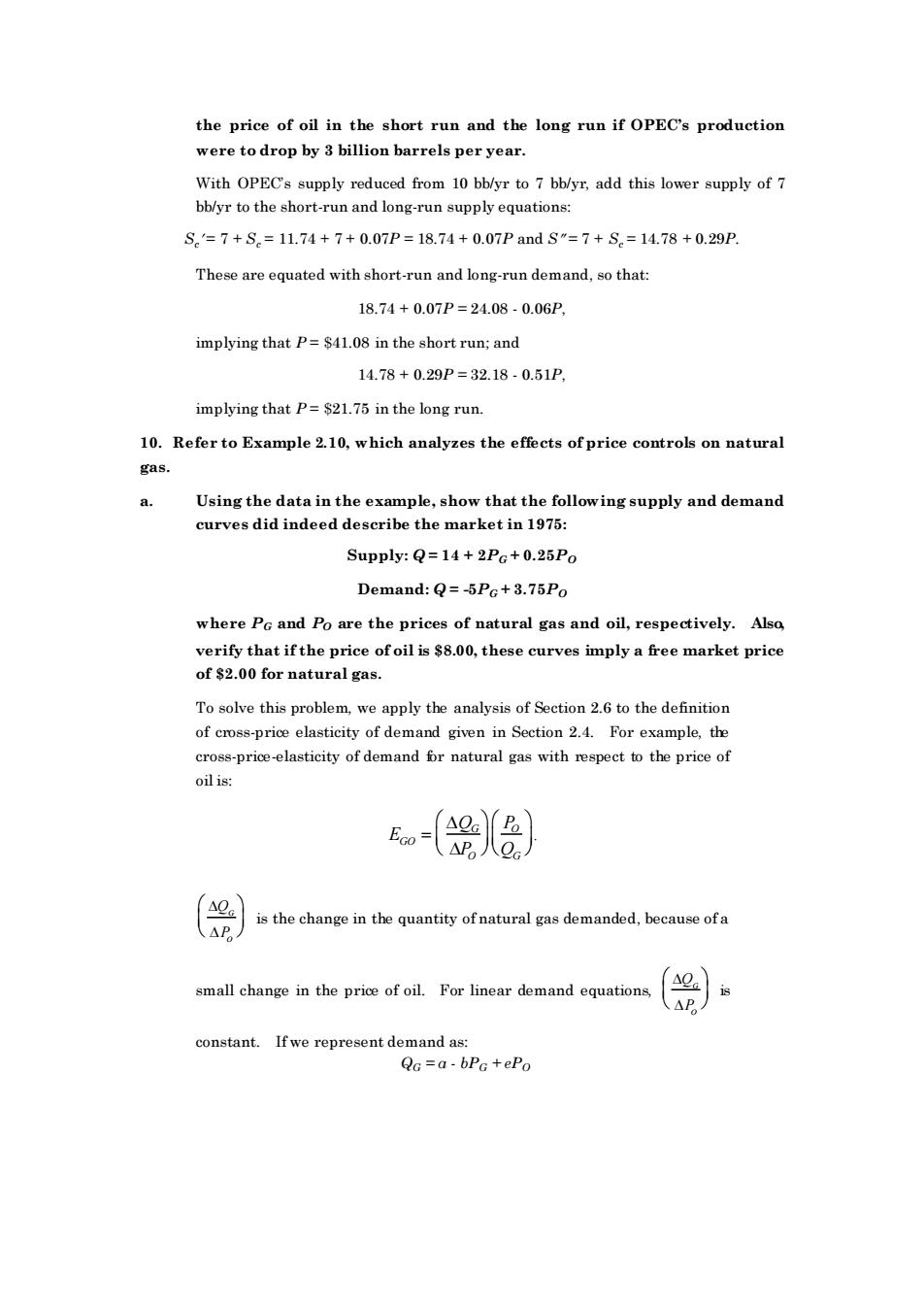正在加载图片...

the price of oil in the short run and the long run if OPEC's production were to drop by 3 billion barrels per year. With OPECs supply reduced from 10 bb/yr to7 bblyr,add this lower supply of 7 bb/yr to the short-run and long-run supply equations: S.=7+S.=11.74+7+0.07P=18.74+0.07 and S=7+S.=14.78+0.29P These are equated with short-run and long-run demand,so that 18.74+0.07P=24.08.0.06P implying that P=$41.08 in the short run;and 14.78+0.29P=32.18.0.51P implying that P=$21.75 in the long run. 10.Refer to Example 2.10,which analyzes the effects of price controls on natural gas. Using the data in the example,show that the following supply and demand curves did indeed describe the market in 1975: Supply:Q=14+2Pa+0.25Po Demand:Q=-5Pc+3.75Po where Pc and Po are the prices of natural gas and oil,respectively.Also verify that ifthe price,these curves imply a free market price for matural gas. To solve this problem,we apply the analysis of Section 2.6 to the definition of cross-price elasticity of demand given in Section 2.4.For example,the cross-price-elasticity of demand for natural gas with respect to the price of oilis: -(爱a ě) is the change in the quantity ofnatural gas demanded,because ofa llchare in the pre of ai.Foe lnear demand constant.Ifwe represent demand as: QG=a-bPG+ePo the price of oil in the short run and the long run if OPEC’s production were to drop by 3 billion barrels per year. With OPEC’s supply reduced from 10 bb/yr to 7 bb/yr, add this lower supply of 7 bb/yr to the short-run and long-run supply equations: Sc = 7 + Sc = 11.74 + 7 + 0.07P = 18.74 + 0.07P and S = 7 + Sc = 14.78 + 0.29P. These are equated with short-run and long-run demand, so that: 18.74 + 0.07P = 24.08 - 0.06P, implying that P = $41.08 in the short run; and 14.78 + 0.29P = 32.18 - 0.51P, implying that P = $21.75 in the long run. 10. Refer to Example 2.10, which analyzes the effects of price controls on natural gas. a. Using the data in the example, show that the following supply and demand curves did indeed describe the market in 1975: Supply: Q = 14 + 2PG + 0.25PO Demand: Q = -5PG + 3.75PO where PG and PO are the prices of natural gas and oil, respectively. Also, verify that if the price of oil is $8.00, these curves imply a free market price of $2.00 for natural gas. To solve this problem, we apply the analysis of Section 2.6 to the definition of cross-price elasticity of demand given in Section 2.4. For example, the cross-price-elasticity of demand for natural gas with respect to the price of oil is: EGO = QG PO PO QG . QG PO is the change in the quantity of natural gas demanded, because of a small change in the price of oil. For linear demand equations, QG PO is constant. If we represent demand as: QG = a - bPG + ePO